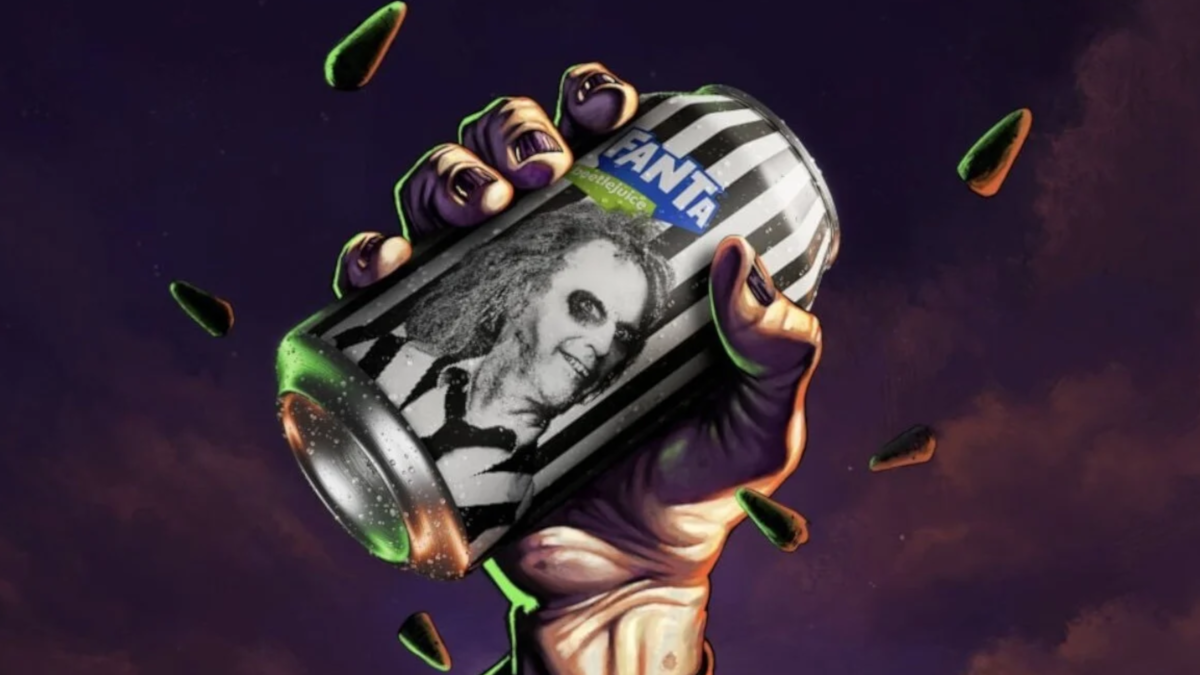Product placement has long been a feature of lots of beloved films…
Just think of Tom Cruise sporting his cool Ray-Ban Aviators in Top Gun (1986), James Bond hopping into his Aston Martin, or E.T. being cajoled out of the woods by those sweet Reese’s Pieces. But what was once a popular tactic for brands to thrust their products onto the silver screen has evolved significantly. Securing audience buy-in has grown into a multi-faceted approach that spans broader marketing partnerships and experiential collaborations. These go beyond simply placing a product in front of a camera and drawing the viewer’s gaze to it for a few all-important seconds.
In its early days, seeing a branded car, refreshment or accessory on screen was enough to capture consumer attention. But audiences have grown savvier, attention spans have shortened, and the landscape of film and media has dramatically shifted. Product placement is no longer the star of the show — it’s just a supporting character.
One reason for this shift is the increased focus on global marketing strategies. Brands have moved towards creating large-scale marketing partnerships with films, with a priority to effectively reach audiences in diverse markets. Take Fanta’s partnership with Beetlejuice Beetlejuice (2024), which created limited-edition Fanta cans using various flavours related to the various characters. Hello, Orange (Jenna Ortega), Strawberry (Winona Ryder), Pineapple (Catherine O’Hara), Grape (Monica Bellucci) and Lemon (Willem Dafoe)! Partnerships like these focus more on creating personal, enduring experiences that can be repeated time and time again with every trip to the supermarket — rather than just relying on a product appearing in a scene for a few seconds.
What is product placement, and why is it changing?
At its core, product placement is the practice of inserting a brand’s product into a film, TV show, or video game. It can be subtle and nuanced but powerful, as we saw in last year’s hit Barbie (2023), when in a quietly surprising final scene, Barbie entered ‘the real world’ wearing her trusted Birkenstock sandals.
In pink, of course. This 46-second appearance caused a rise in demand for the classic shoes, resulting in a +340% surge in sales. And for decades, the product placement strategy has allowed brands to slip into consumers’ consciousness effortlessly, making them part of the entertainment experience.
But, putting the success of Barbie aside, it’s a tactic that brands need to balance carefully so it doesn’t feel forced or intrusive. Why? Because today, consumers are more aware of these tactics. They’ve learned to be hyper-sensitive to ‘in-yer-face’ advertising, and the power of product placement might not be as strong as it once was. Barbie was the exception, not the rule.
Brands are increasingly seeing the value in extending a partnership beyond product placements; in order to reach wide audiences more quickly. This could be through experiential campaigns which get closer to the consumer and engage them in fun, playful ways and ultimately, resonate more personally. Crucially, they can target different audiences and regions.
For example, Pearl & Dean’s recent partnership with Boots and Soltan saw the sun cream brand get a ‘Mega Minions makeover’ in a campaign that harnessed the power of Despicable Me 4’s little yellow rascals to encourage families to take care with their skin over the summer holidays. Playfully joining forces with a well-known franchise and using its iconic characters allowed Boots to reach beyond in-film influence and become a part of the cultural conversation surrounding the film’s release.
Luxury vehicle placement in films might be dominated by James Bond but he isn’t the only one getting in on the vroom-vroom action. In 2023, Pearl & Dean brokered a partnership between Everyman and Jaguar, which saw a special immersive event and screening of Damien Chazelle’s highly anticipated film Babylon (2022) take place in a space that was transformed to catapult audiences back to the hedonistic Hollywood of the 1920s — with dancers, acrobats, showgirls and live performances. Special guests were chauffeured in Jaguar’s fully electric vehicles.
It was an excellent example of a standalone film getting creative with partnerships to explore fun and exciting ways of engaging their audiences and shows a new willingness to encourage more experiential partnerships that bring value to both the brands and the audiences.
Brands owning the spotlight
We’re seeing an increasing number of brands opt for marketing partnerships that don’t ever feature their product on screen. And that’s fine — they can still leverage the film’s global reach, build excitement through activations and establish a presence in different markets.
High-impact product placements alone may no longer be enough for brands to stand out. To remain effective, they need to become more innovative in their partnerships and explore new strategies to engage their audiences. This shift encourages creativity and encourages brands to take a fresh approach to maintaining consumer interest and connection.
As product placement evolves, brands have a valuable opportunity to enhance their partnerships beyond the traditional cameo in a film. The future for meaningful partnerships lies in developing intrinsic, experiential relationships which offer consumers more than just passive exposure from the comfort of a cinema chair or living room sofa. People don’t want to sit back and be told what to do anymore, they want to be a part of it.
Featured image: Fanta x Beetlejuice Beetlejuice / The Coca-Cola Company

